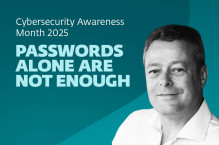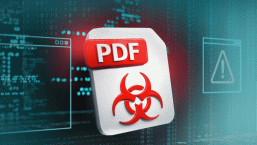As a report from the Anti-Phishing Working Group (APWG) revealed earlier this year, there has been a notable rise in the number phishing attacks. It’s a widespread problem, posing a huge risk to individuals and organizations (there were, for example, more attacks in Q1 2016 than in any other quarter in history).
Needless to say, it’s something we all need to be aware of, as these types of attacks are not going to go away anytime soon. But worry not, as our Top 5 guide will help keep these criminals at bay.
Before we go into that, here’s a brief overview of what phishing is (for more detail, check out this expert feature). In short, it’s a vector for identity theft where cybercriminals try to get users to hand over personal and sensitive information (without them knowing it). Interestingly, phishing has – in one form or another – been around for years via phone calls and physical letter scams.
Cybercriminals have typically deployed phishing attacks post-breach. This was the case with the Anthem and eBay data breaches, where criminals sent out warnings to users advising them to change their passwords (but directing them to a fake website in an attempt to harvest their details).
However, some information security pros now believe that cybercriminals view phishing attacks as a successful (and easy) way of getting into an enterprise to launch more sophisticated attacks. Humans are, after all, increasingly seen as the weakest link (insider threats are a big problem) and thus the most effective target for criminals looking to infiltrate an enterprise or SME.
Follow the tips below and stay better protected against phishing attacks.
1. Be sensible when it comes to phishing attacks
You can significantly reduce the chance of falling victim to phishing attacks by being sensible and smart while browsing online and checking your emails.
For example, as ESET's Bruce P. Burrell advises, never click on links, download files or open attachments in emails (or on social media), even if it appears to be from a known, trusted source.
RELATED READING: Would you get hooked by a phishing scam? Test yourself
You should never click on links in an email to a website unless you are absolutely sure that it is authentic. If you have any doubt, you should open a new browser window and type the URL into the address bar.
Be wary of emails asking for confidential information - especially if it asks for personal details or banking information. Legitimate organizations, including and especially your bank, will never request sensitive information via email.
2. Watch out for shortened links
You should pay particularly close attention to shortened links, especially on social media. Cybercriminals often use these – from Bitly and other shortening services – to trick you into thinking you are clicking a legitimate link, when in fact you're being inadvertently directed to a fake site.
You should always place your mouse over a web link in an email to see if you're actually being sent to the right website – that is, "the one that appears in the email text" is the same as "the one you see when you mouse-over".
Cybercriminals may use these ‘fake’ sites to steal your entered personal details or to carry out a drive-by-download attack, thus infesting your device with malware.
3. Does that email look suspicious? Read it again
Plenty of phishing emails are fairly obvious. They will be punctuated with plenty of typos, words in capitals and exclamation marks. They may also have an impersonal greeting – think of those ‘Dear Customer’ or ‘Dear Sir/Madam’ salutations – or feature implausible and generally surprising content.
Cybercriminals will often make mistakes in these emails … sometimes even intentionally to get past spam filters, improve responses and weed out the ‘smart’ recipients who won’t fall for the con.
Indeed, it has been rumored that China’s infamous PLA Unit 61398 spends time seeing just how many people would open and interact with their worst phishing emails.
4. Be wary of threats and urgent deadlines
Sometimes a reputable company does need you to do something urgently. For example, in 2014, eBay asked its customers to change their passwords quickly after its data breach.
However, this is an exception to the rule; usually, threats and urgency – especially if coming from what claims to be a legitimate company – are a sign of phishing.
Some of these threats may include notices about a fine, or advising you to do something to stop your account from being closed. Ignore the scare tactics and contact the company separately via a known and trusted channel.
5. Browse securely with HTTPs
You should always, where possible, use a secure website (indicated by https:// and a security “lock” icon in the browser's address bar) to browse, and especially when submitting sensitive information online, such as credit card details.
You should never use public, unsecured Wi-Fi for banking, shopping or entering personal information online (convenience should not trump safety). When in doubt, use your mobile’s 3/4G or LTE connection.
As a slight aside, it should be easier to spot dodgy, unsecure websites – Google, for example, is looking to crack down on this soon by labeling sites that do not offer appropriate protection.




